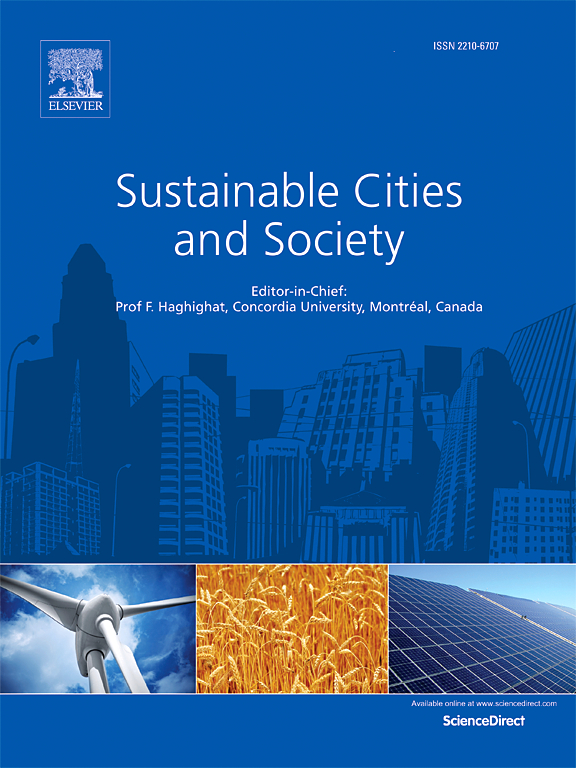Generation and prediction of building coincident design day for improving energy efficiency of building air conditioning systems
IF 10.5
1区 工程技术
Q1 CONSTRUCTION & BUILDING TECHNOLOGY
引用次数: 0
Abstract
For sustainable building air conditioning systems, accurately determining the total design cooling load serves as a critical foundation for judicious selection of cold and heat sources and the enhancement of their operating efficiency. Conventional design weather data provided in standard specifications and references are insufficient to meet the precise calculation of the total design cooling load. Coincident design day refers to a design day that considers the simultaneous occurrence of weather elements, as well as the correlation between design weather data and building characteristics. The utilization of coincident design days will enhance the precision of design cooling load calculations in air conditioning systems. In this study, a generation method and a prediction method for building coincident design days were proposed to promote the application of building coincident design days in a wider range. The evaluation results demonstrate that building coincident design days can reduce the building design cooling load by 10% ∼ 40%, while the relative deviation from the actual design cooling load is kept below 3% in more than 98% of cases. This is anticipated to yield at least a 2% ∼ 8% reduction in operating energy consumption and additional saving in construction costs for building air conditioning systems.
求助全文
约1分钟内获得全文
求助全文
来源期刊

Sustainable Cities and Society
Social Sciences-Geography, Planning and Development
CiteScore
22.00
自引率
13.70%
发文量
810
审稿时长
27 days
期刊介绍:
Sustainable Cities and Society (SCS) is an international journal that focuses on fundamental and applied research to promote environmentally sustainable and socially resilient cities. The journal welcomes cross-cutting, multi-disciplinary research in various areas, including:
1. Smart cities and resilient environments;
2. Alternative/clean energy sources, energy distribution, distributed energy generation, and energy demand reduction/management;
3. Monitoring and improving air quality in built environment and cities (e.g., healthy built environment and air quality management);
4. Energy efficient, low/zero carbon, and green buildings/communities;
5. Climate change mitigation and adaptation in urban environments;
6. Green infrastructure and BMPs;
7. Environmental Footprint accounting and management;
8. Urban agriculture and forestry;
9. ICT, smart grid and intelligent infrastructure;
10. Urban design/planning, regulations, legislation, certification, economics, and policy;
11. Social aspects, impacts and resiliency of cities;
12. Behavior monitoring, analysis and change within urban communities;
13. Health monitoring and improvement;
14. Nexus issues related to sustainable cities and societies;
15. Smart city governance;
16. Decision Support Systems for trade-off and uncertainty analysis for improved management of cities and society;
17. Big data, machine learning, and artificial intelligence applications and case studies;
18. Critical infrastructure protection, including security, privacy, forensics, and reliability issues of cyber-physical systems.
19. Water footprint reduction and urban water distribution, harvesting, treatment, reuse and management;
20. Waste reduction and recycling;
21. Wastewater collection, treatment and recycling;
22. Smart, clean and healthy transportation systems and infrastructure;
 求助内容:
求助内容: 应助结果提醒方式:
应助结果提醒方式:


